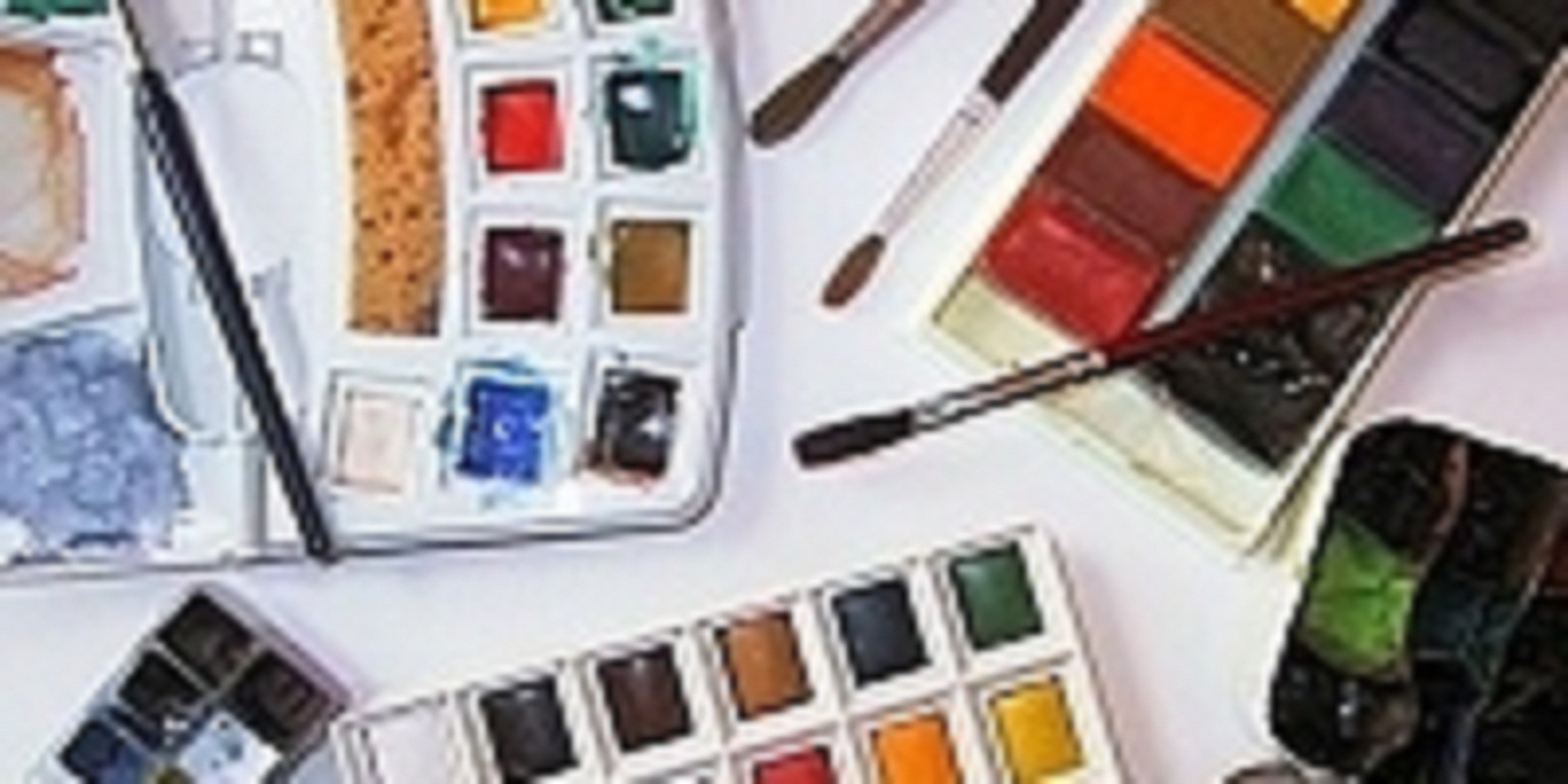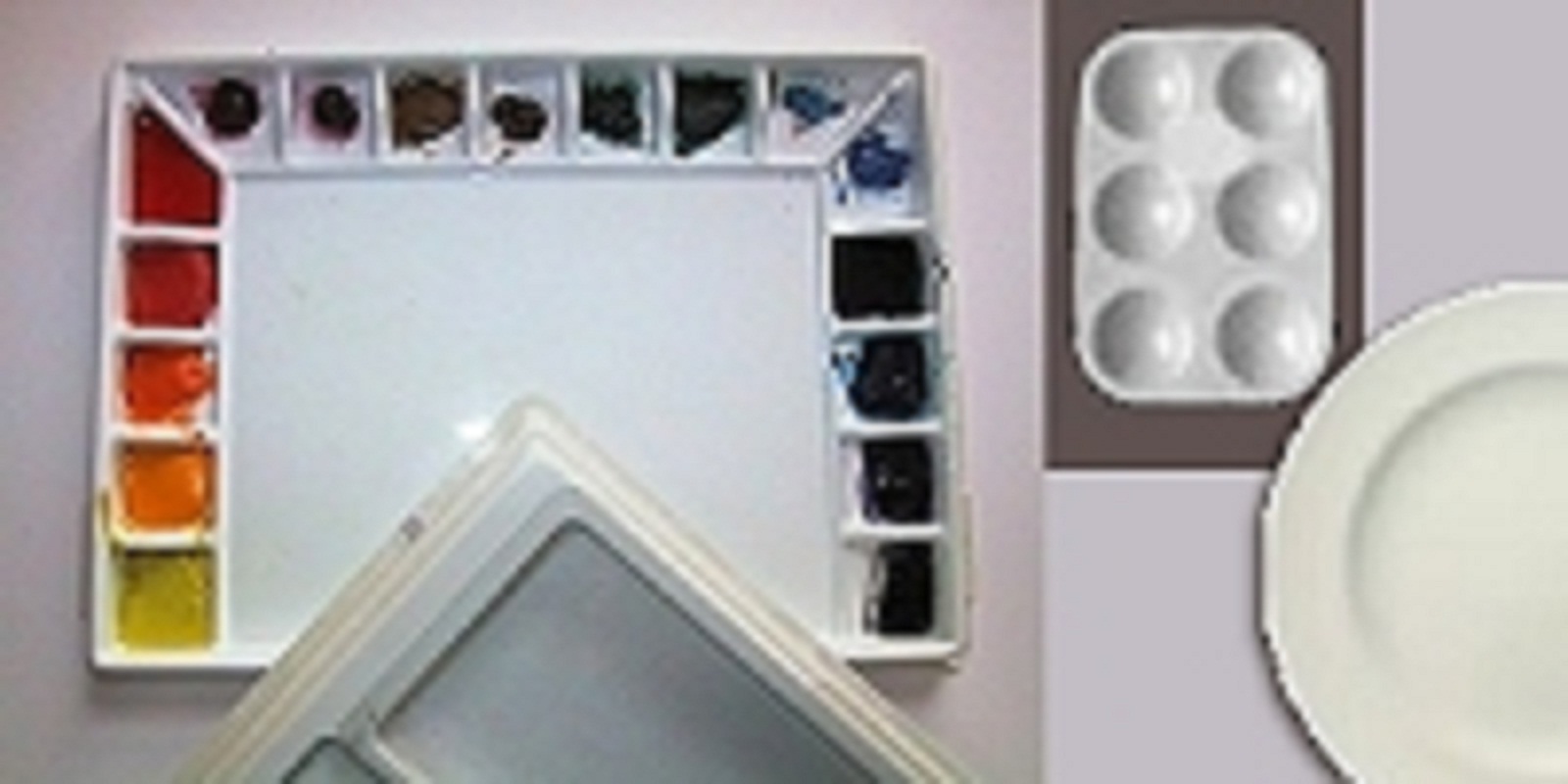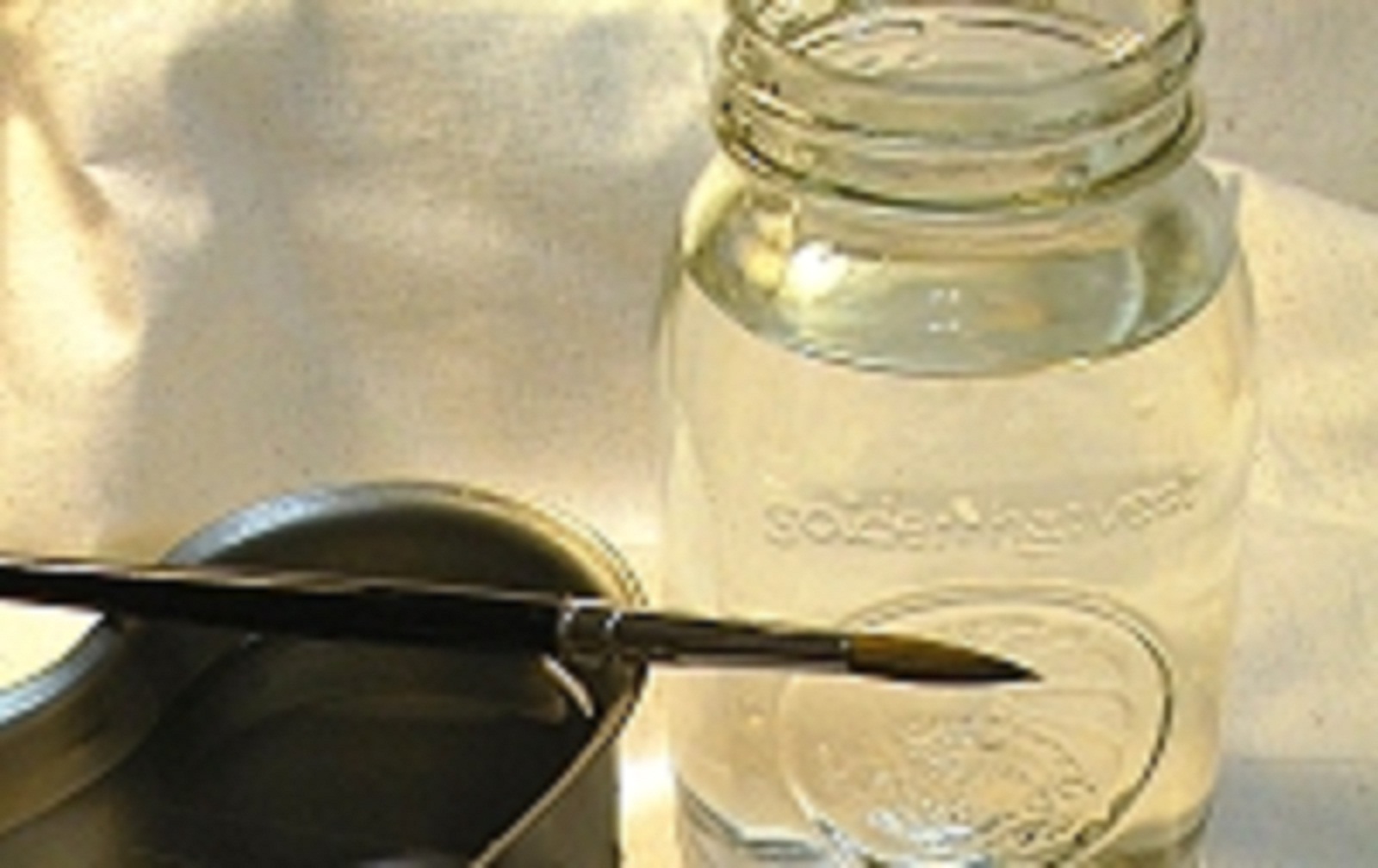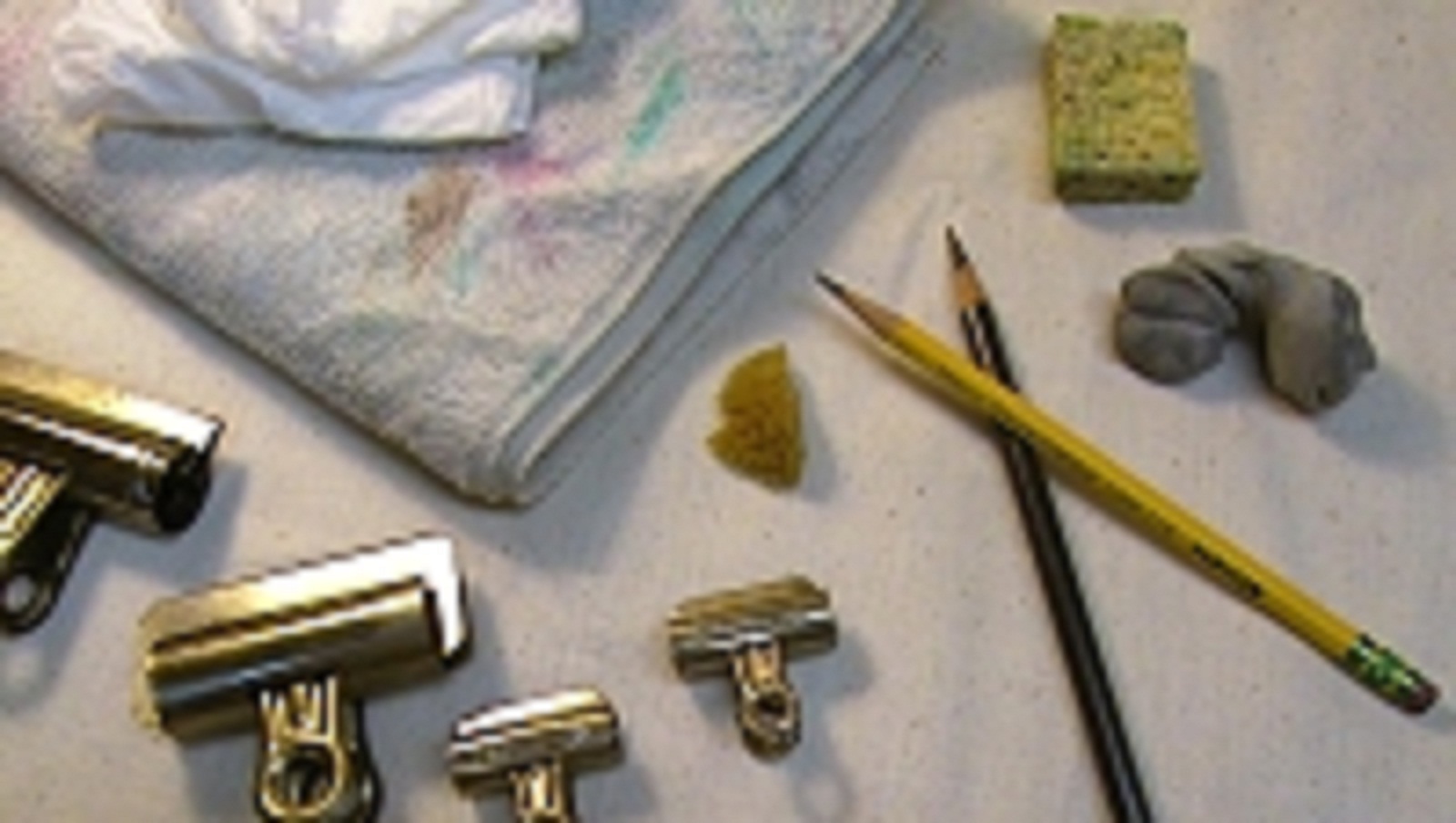1. Brush
If you can afford only one brush, buy a #8 round red sable watercolor brush. Otherwise buy the best synthetic or synthetic-blend brush you can find. Adding a round #4 and a 1" flat would come in handy for detail work and large washes. Most manufacturers have starter sets that contain very usable equivalents. 
2. Paint
Select a set of watercolor paints. The 12-color set shown below is a great deal. Most sets have a good selection of basic colors you'll need for transparent watercolor painting. Rarely use the white paint that is included in most cake or tube color sets, as it's opaque. Its use will change your watercolor paintings into gouache paintings. Gouache, or opaque watercolor, is a distictly different category and approach to painting. If you prefer tubes, pre-packaged tube sets will also give you a good starter selection of colors for watercolor painting. Start by using brand name "academic" or "student" grade watercolors until you can commit your resources to buying "artist" grade watercolor supplies. I suggest the following palette of colors for beginners:
| Cadmium Yellow Light | Phthalocyanine Blue | ||
| Cadmium Yellow Medium | Phthalocyanine Green | ||
| Cadmium Red Medium | Hooker's Green | ||
| Alizarin Crimson | Burnt Sienna | ||
| Ultramarine Blue | Burnt Umber |
This selection is a bright balanced palette of warm and cool colors containing pure transparent and semi-transparent organic and inorganic pigments. My personal palette contains 8 additional colors. You'll fill in the gaps and find your own favorites as you try new colors and explore watercolor painting. 
3. Paper
Use any watercolor pad, block, or loose paper with a weight of 140lb (300gsm) or higher. The heavier the paper, the less likely you'll have to deal with the warpage of the damp paper while painting. I recommend larger sheets like this one because you can always cut them in half or quarters for smaller paintings. You can even find serviceable beginner's watercolor pad (for learning) near the Crayola rack at your local drugstore. Try different surface textures to find your favorite. 
4. Palette
Cake and pan watercolor sets usually have built-in fold out palettes that are useable in varying degrees depending on their size and orientation. For your tube watercolors, you can use a flat white dinner plate or buy some inexpensive 6 or more welled plastic palettes like the ones you used in grade school for your tempera paints. A covered plastic palette makes for the least waste and most convenience if you are using tube watercolors. If you're getting serious, you can try a metal-covered palette (if you like to paint outside) or a porcelain one (heavier, but lasts forever). 
5. Water
Find a glass, or jar, or small bucket to hold fresh, clean water. Use two if possible. One for rinsing your brush between colors, and one for clean water for painting. Tap water is usually fine. Hard water decreases paint solubility and flow. Overly softened water acts as a wetting agent and increases paint solubility and flow. If you're concerned, use bottled water. 
6. Extras
A few more odds 'n' ends will round out your kit. A pencil, a kneaded eraser, some tissues, and an old rag or paper towels, and a couple of large metal clips for holding your watercolor paper to a board. Voila! That's all you need to start your adventures in watercolor painting. If you find yourself creating world-class masterpieces, immediately upgrade your paints to artist-grade and your paper to the 100% cotton archival quality type. Then proceed to have fun making what the world has never seen.



